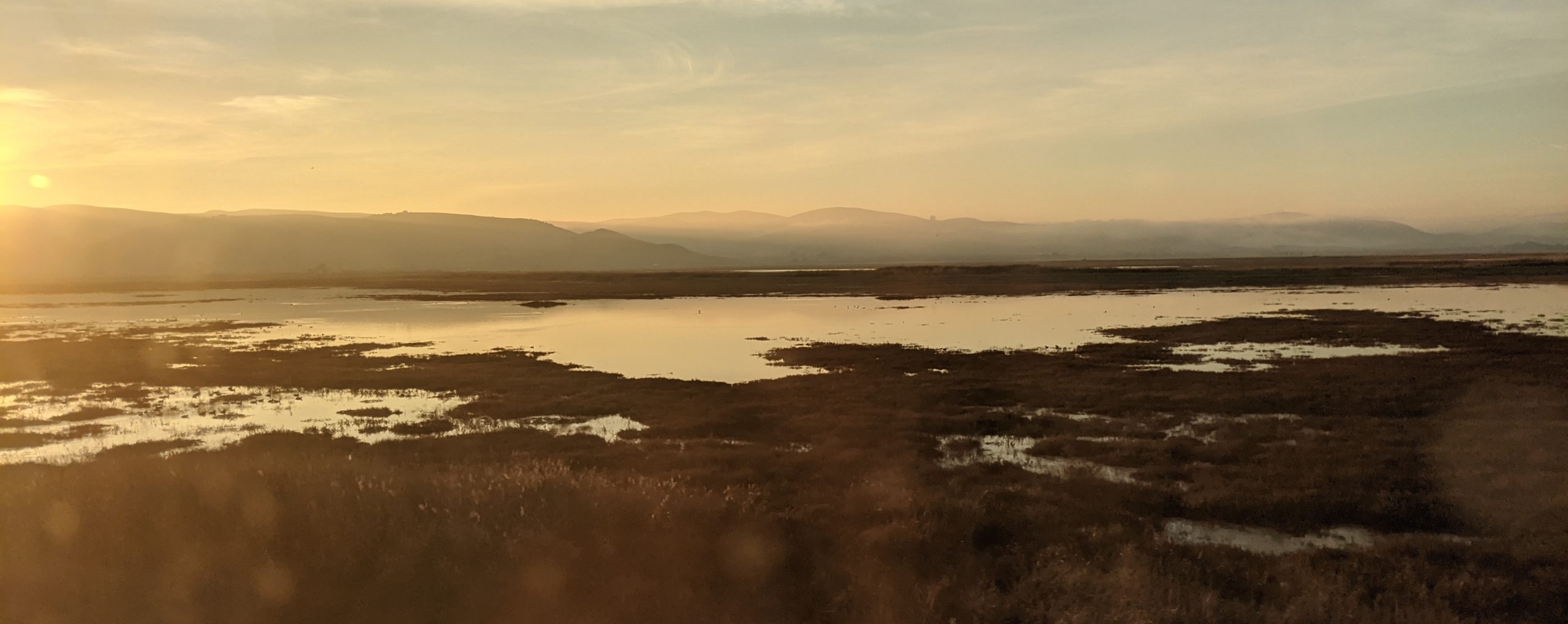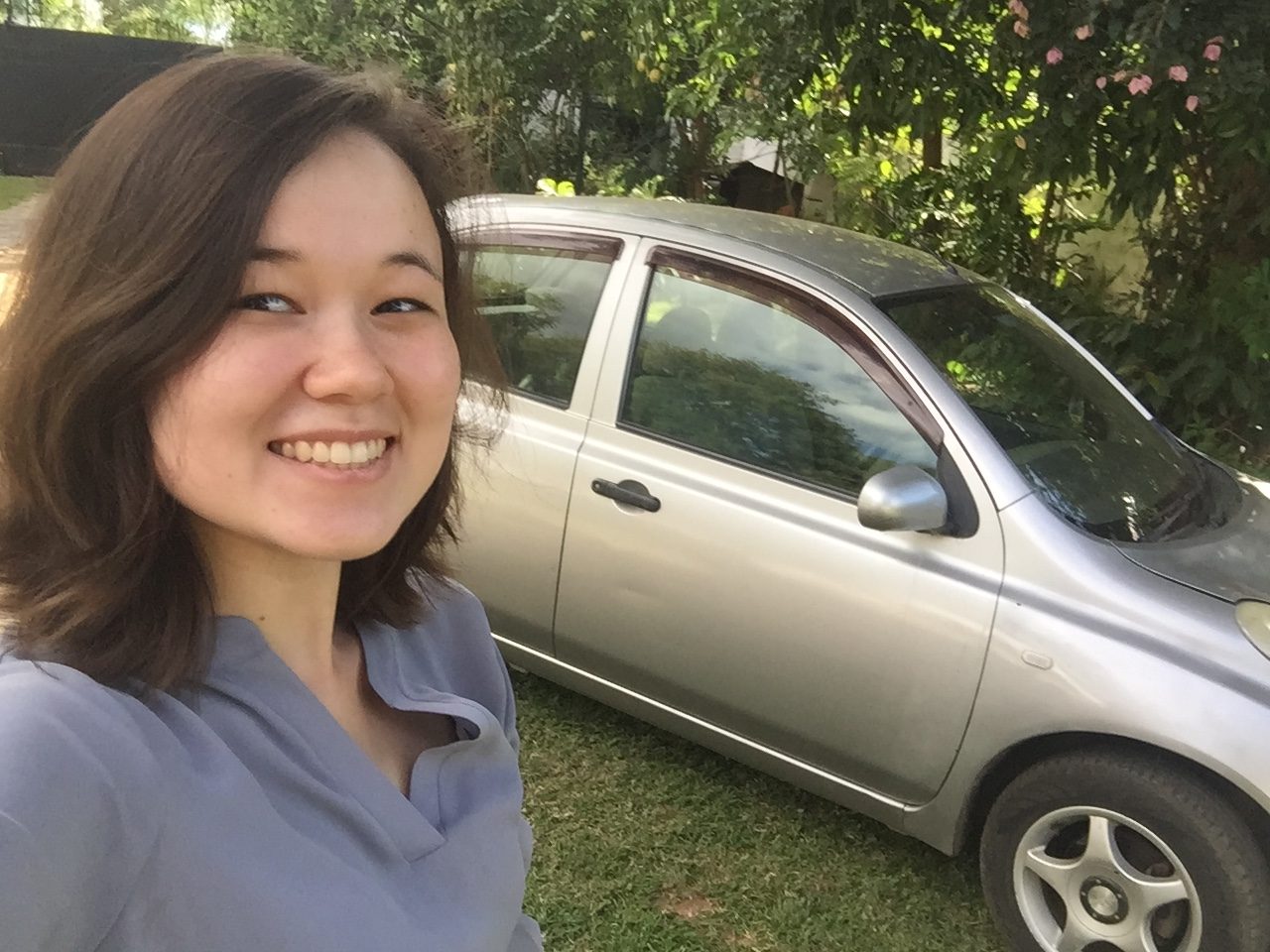I am the proud owner of a beautiful 2002 Nissan March.
How did I get here? Why did it take a month and a half?
To put this in perspective, if I were a hamster, I could’ve had three litters of baby hamsters in this time period.

Well. Buying a car in Zambia is complicated business. Here’s a (woefully incomplete) guide for those of you who might do it someday, and a riveting story of bureaucracy, witchcraft, and money-stuffed backpacks for those of you who won’t. Let’s start at the very beginning.
How do cars get to Zambia? And why are they almost all Japanese?

The manufacturing sector isn’t big here yet. But Japanese cars are left-hand drive and hardy, and Japanese regulatory laws are strict. By the time a car in Japan is 10 years old, it probably won’t pass the regulatory tests, but is still perfectly fine to drive. So they get exported in something that’s called grey market sales, which sounds like a less hardcore black market but just means that they’re being exported by a third party who’s not the manufacturer. They get exported everywhere (yes, even the US).
Want to buy a car in Zambia and have some time? You can import!
You can talk to one of these importing agencies and choose a car you want to import. Zambia doesn’t have seaports, so it’ll come through a port, most likely Dar es Salaam or Durban, and be driven to Zambia. (These import places have different policies on whether they drive them for you, you may need to hire a guy to drive it, or turn it into an adventure for yourself, if you don’t mind border crossings).
But beware! The price these Japan-importing places advertise isn’t the whole price of a car. There’s also an import tax, which is more than half the value of the car value. (Caveat: if you have a work permit of more than a year and you import a car before you get into the country (confusing I know) you don’t have to pay this import tax. Same if you’re a diplomat). This seems like a somewhat legit guide to importing.
Because of this import tax, and the length of the import process, most expats and many Zambians will just buy cars used. Zambia does not have the motor vehicle regulatory laws of Japan. When a car gets here, it sticks around for ages. In Zambia, 2007 vehicles are considered new. And it makes sense! A 2007 vehicle is probably really recently imported from Japan, where the roads are nice, servicing is good, and people don’t seem to take days-long road trips through mud in national parks. (The whole car business, incidentally, has instilled in me a small desire to move to Japan).
So you don’t want to go through the hassle of importing? Buy a used car!

There are three broad ways you can find a used car.
First, word of mouth.
Your friends or your friends’ friends or your friend’s mechanic or “car guy” might know of a used car. This is ideal, since they probably have some sort of societal obligation to you and won’t try to sell you something awful.
Second, used car dealership.
Jan Japan is probably the most well-known in Lusaka. They have auctions every once in a while in which they sell the used cars that have been in the lots too long.
Third, and most exciting, Facebook groups.
I joined about 5 when I came to Lusaka. There are two flavors of groups. The expat groups are generally filled with expats selling things for either ridiculously expensive because they’re expats or ridiculously cheap because they’re fleeing the country. Then there are the generic Zambia used car groups, filled with “car guys” selling cars, plus a good mix of normal Zambians and expats who are selling cars for normal prices. I guess there’s a third flavor of group, the Zambia cars under 15000 ZMW (roughly $1400), which you should only venture near if you’re a gifted mechanic, or if you want a car that doesn’t run.
In any of these groups (or dealerships), buyer beware. You are buying a used car, and people desperate to get rid of something can be less than honest about its problems.
(Also, in any of these groups, expect to get bombarded with witchcraft advertisements. If you want a magical penis enlargement along with your car, you’ve come to the right place).
So you’ve trawled Facebook and found a car that is in reasonable price range.It’s “very neat”, “pressure free”, and isn’t advertised as “push to start”. You’ve messaged the seller and they don’t live 9 hours away (this, sadly, happened to me).
You’ve found a car you might be interested in; what do you do now?
I assume this part isn’t too different from buying a used car anywhere else:
-Take a mechanic who knows what they’re doing with you to see the car.
-Make sure the car isn’t dripping fluids.
-Check to see that the stuff under the hood isn’t corroding.
-Take it for a test drive.
-Ask for a service record.
-Make sure the car doesn’t have, like, four different types of tires; or if it does, make sure that the seller either a) fixes the tires themselves or b) lowers the price by the amount of the reasonable repair.
I’m not going to provide a full list of things to look for because that’s boring (if anyone is really looking for advice, PM me or better, an actual mechanic), but note that if you want to check the year of make, it’ll be on the driver’s license seatbelt. Also, if you want to know what year it was imported to Zambia (more recent is always better) the license plate will tell you. Find someone who has all the license plate import years memorized (there are a surprising number of them) and ask them to date it.
So you’ve decided to buy the car! Congratulations!
Maybe you bought a big car because you actually wanted to go on trips (Zambia’s roads are bad) and offroad, or you bought a small car, like me, lured by dreams of fuel efficiency and being a road trip freeloader.
This is where the process veers off the road most traveled. If it hasn’t already?
How will you pay for the car?

Maybe you have a Zambian bank account. But you’re probably a foreigner, so you probably don’t. So you probably end up in a situation like this.
Until a few years ago, Zambia didn’t have any bills bigger than the $5 equivalent. They changed it, and now they have… a $10 equivalent.

And half the time the ATMs don’t have those. This is fine for day-to-day purchases, and also (back to the inequality thing) is not unreasonable for a country with a GDP per capita of just under $1,2000. But it does make it feel incredibly sketchy to buy a car with cash.
This is how I found myself in the middle of a mall parking lot with a backpack stuffed full of thousands of dollars in the equivalent of 5s and 10s. (Sorry, parents).
Thankfully, it all ended up fine, ended up being a lovely day at the mall with some croissants and no mugging.

Wire transfer is also a good option, and a bit less terrifying. You’ll just want to check how much your bank charges. And if you have to do something like be in the your home country to sign a thing.
You’re almost there. But first, you have change of ownership.

This is an excruciating process. Unless you hire someone to help.
General advice to hire someone to change owership unless you want to take a couple weeks off work to deal with the government. The woman I bought the car from gave me impeccable paperwork and had taken good care of the car, which made this process a lot less stressful than it could’ve been.
To illustrate how ridiculous change of ownership is, she gave me about 30 documents, and nearly all of these were needed by the authorities.
I can’t tell you all of what change of ownership entails, because I hired the guy recommended by my colleagues to do the process for me. It took him about a week, and he was also doing other things, but he’s a change of ownership expert. The process cost about $150 total. The most expensive fees were for the tax authorities and the Road Transport Agency, for processing papers, I guess, and, of course, the fee for time. There’s also a physical inspection and a fitness inspection, to check that your car is functioning.
I had to go for one part, where they took down my picture and passport details. It was at the Road Transport Agency, which was in the middle of town and pretty hectic. It was not the first time I have been made to retake a picture for smiling too much.
There are three things you need to have on your car windshield: proof of fitness, proof of insurance, and proof of road tax.
You cut out little circles from official documents and use stickers to put them on your car windshield. If you don’t have them, the police can catch you and fine you roughly $10-$30. (Also if you don’t have triangles or a mini fire extinguisher in the car). Also if your car crashes and you’re not insured, it’s bad. Just like anywhere else.
Voila, you have a car!
I’ve never bought a car in the US so I have no idea what the process is like. People tell me it’s easier, but cars are more expensive.
All in all, it was an experience. I learned a lot about cars, especially Japan’s export market and Zambia’s Facebook groups. Hope you did too!

